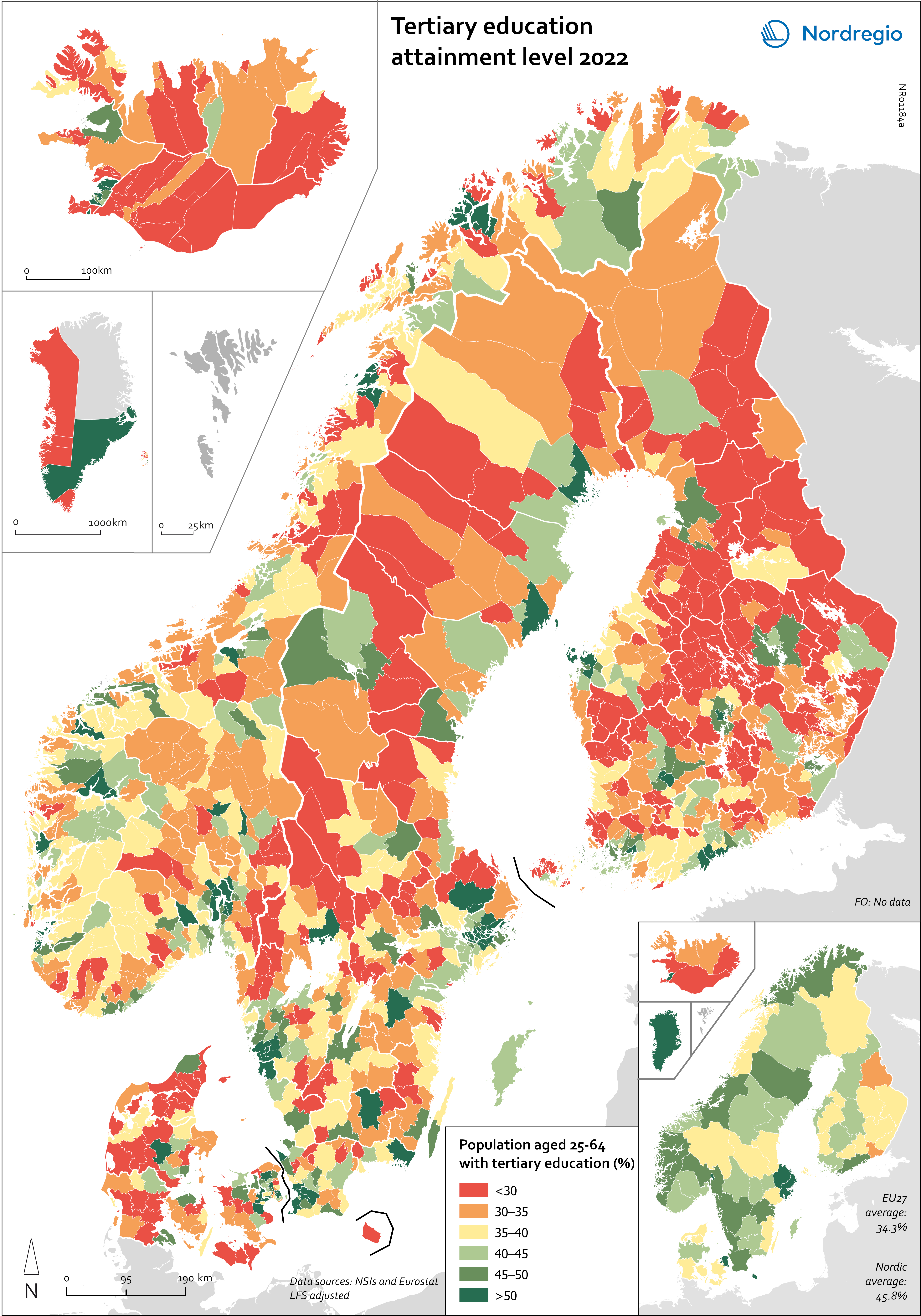This map shows the share of people aged 25-64 years with a tertiary education in Nordic municipalities (big map) and regions (small map) in 2022.
All of the Nordic countries have a higher share of people who completed tertiary education than the EU average. The highest share is in Sweden (48.6%), followed by Norway (47.8%), Iceland (42.9%), Finland (42.7%) and Denmark (42.1%). There are, however, big differences within the countries with a considerable urban-rural divide in terms of tertiary education. The capital regions of Oslo (66%), Stockholm (58%), Copenhagen (Hovestaden) (51%), Reykjavik (51%) and Helsinki (Uusimaa) (49%) stand out with particular high share of tertiary educated population. Conversely, rural regions such as Iceland outside of Reykjavik (30%), Kymenlaakso (34%), Kainuu (34%), Etelä-Savo (35%), Satakunta (35%) in Finland and Syddanmark (35%), Midtjylland (36%) and Nordjylland (36%) in Denmark are among the regions with the lowest share of tertiary educated population.
The successful implementation of the Bologna Process and the derived increase in educational levels of young people in the Nordic Region coincides with large numbers of the ‘baby boomer’ generation leaving the labour market. This generation has a significantly lower level of education than the current 24–35 age group – i.e. those who are now entering the labour market. This trend can be seen across the Nordic Region.

